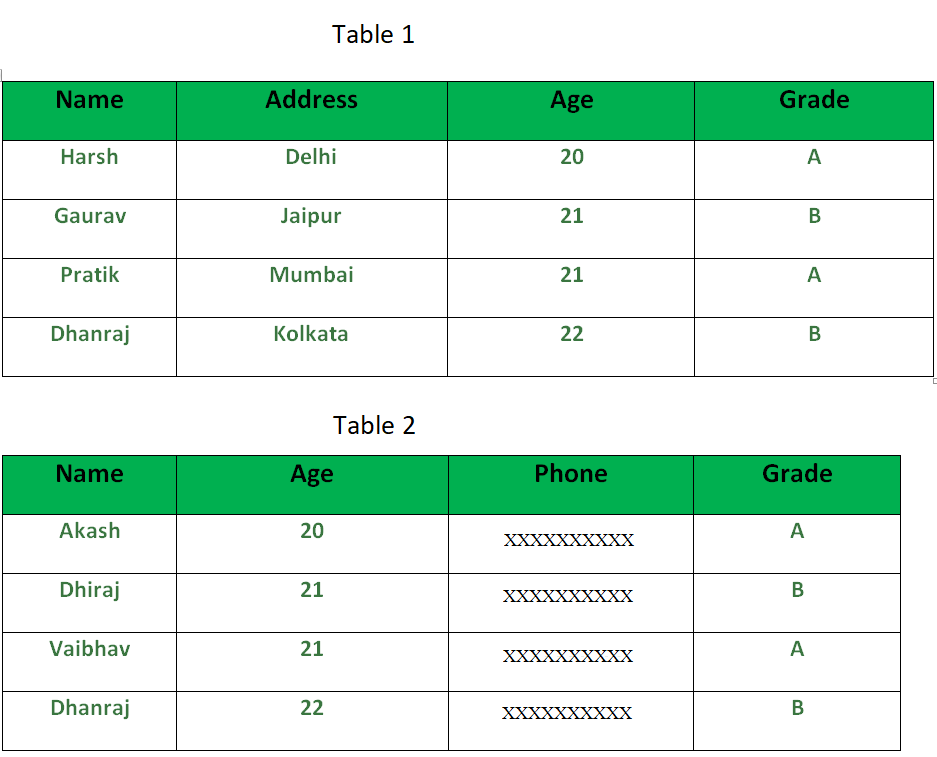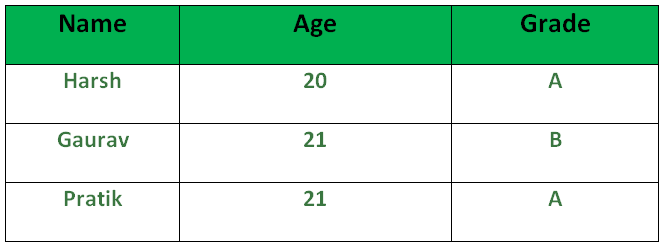(SQL Example for Citizen Data Scientist & Business Analyst)
SQL | MINUS Operator
The Minus Operator in SQL is used with two SELECT statements. The MINUS operator is used to subtract the result set obtained by first SELECT query from the result set obtained by second SELECT query. In simple words, we can say that MINUS operator will return only those rows which are unique in only first SELECT query and not those rows which are common to both first and second SELECT queries.
Pictorial Representation:

As you can see is in the above diagram, the MINUS operator will return only those rows which are present in the result set from Table1 and not present in the result set of Table2.
Basic Syntax:
SELECT column1 , column2 , ... columnN FROM table_name WHERE condition MINUS SELECT column1 , column2 , ... columnN FROM table_name WHERE condition; columnN: column1, column2.. are the name of columns of the table. Important Points:
- The WHERE clause is optional in the above query.
- The number of columns in both SELECT statements must be same.
- The data type of corresponding columns of both SELECT statement must be same.
Queries:
SELECT NAME, AGE , GRADE FROM Table1 MINUS SELECT NAME, AGE, GRADE FROM Table2
Output:
The above query will return only those rows which are unique in ‘Table1’. We can clearly see that values in the fields NAME, AGE and GRADE for the last row in both tables are same. Therefore, the output will be the first three rows from Table1. The obtained output is shown below:
Note: The MINUS operator is not supported with all databases. It is supported by Oracle database but not SQL server or PostgreSQL.
Learn to Code SQL Example – SQL | MINUS Operator
Disclaimer: The information and code presented within this recipe/tutorial is only for educational and coaching purposes for beginners and developers. Anyone can practice and apply the recipe/tutorial presented here, but the reader is taking full responsibility for his/her actions. The author (content curator) of this recipe (code / program) has made every effort to ensure the accuracy of the information was correct at time of publication. The author (content curator) does not assume and hereby disclaims any liability to any party for any loss, damage, or disruption caused by errors or omissions, whether such errors or omissions result from accident, negligence, or any other cause. The information presented here could also be found in public knowledge domains.
Learn by Coding: v-Tutorials on Applied Machine Learning and Data Science for Beginners
Latest end-to-end Learn by Coding Projects (Jupyter Notebooks) in Python and R:
All Notebooks in One Bundle: Data Science Recipes and Examples in Python & R.
End-to-End Python Machine Learning Recipes & Examples.
End-to-End R Machine Learning Recipes & Examples.
Applied Statistics with R for Beginners and Business Professionals
Data Science and Machine Learning Projects in Python: Tabular Data Analytics
Data Science and Machine Learning Projects in R: Tabular Data Analytics
Python Machine Learning & Data Science Recipes: Learn by Coding
R Machine Learning & Data Science Recipes: Learn by Coding
Comparing Different Machine Learning Algorithms in Python for Classification (FREE)
There are 2000+ End-to-End Python & R Notebooks are available to build Professional Portfolio as a Data Scientist and/or Machine Learning Specialist. All Notebooks are only $29.95. We would like to request you to have a look at the website for FREE the end-to-end notebooks, and then decide whether you would like to purchase or not.


